Guide: Subject: “Sydney Fitar-Web Spider”
1:How poisonous is the Sydney funnel-web spider?
2:sydney funnel-web spider bite wound
3:What happens if you get bitten by a Sydney funnel-web spider?
4:sydney funnel-web spider size
5:sydney funnel-web spider habitat location
what is sydney funnel-web spider
The Sydney funnel-web spider (Atrax robustus) is a species of venomous mygalomorph spider native to eastern Australia, usually found within a 100 km (62 mi) radius of Sydney. It is a member of a group of spiders known as Australian funnel-web spiders. Its bite is capable of causing serious illness or death in humans if left untreated. The Sydney funnel-web has a body length ranging from 1 to 5 cm (0.4 to 2 in). Both sexes are glossy and darkly coloured, ranging from blue-black, to black, to shades of brown or dark-plum coloured.
Identifying funnel-web spiders
- Shiny carapace
- Deeply curved groove (fovea)
- No obvious body pattern
- Eyes closely grouped
- Four spinnerets, largest with last segment longer than wide
- Lower lip (labium) studded with short, blunt spines
- Modified male second leg (a male trapdoor spider has the first leg modified.)
- Male second leg: an obvious, conical projection or ‘spur’ on the lower side of the middle segment (tibia) of the second leg (about halfway along) is characteristic of the genus Atrax, exemplified by the Sydney Funnel-web Spider, Atrax robustus. Males of all other funnel-web species either have a blunt, spine-covered tibial swelling, or a few spines only, on the second leg. Note also the mating organ on the male palp.
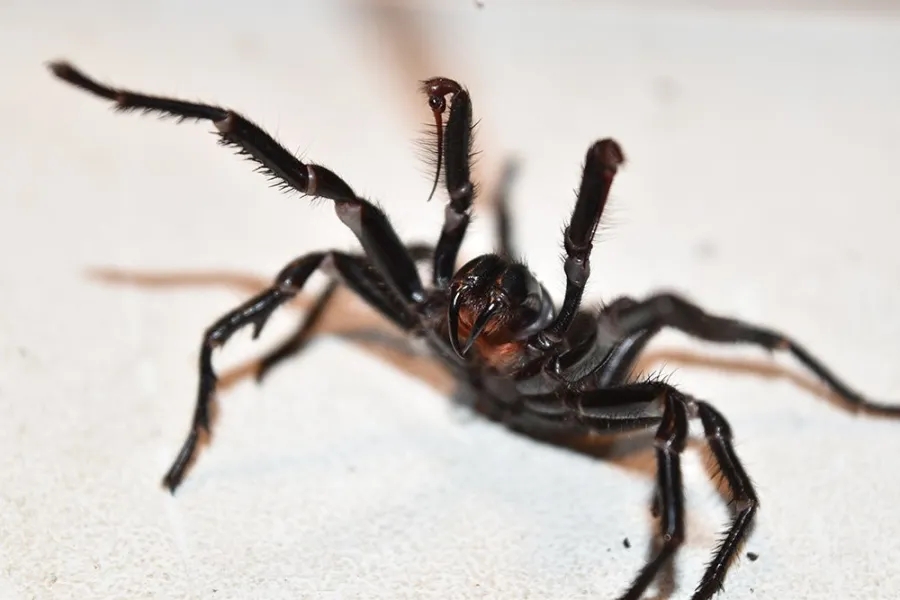
1:How poisonous is the Sydney funnel-web spider?
There are a large number of different toxins in the venom of these spiders. They are classified as atracotoxin. These neurotoxins induce the spontaneous and repetitive firing of action potentials in presynaptic autonomic and motor neurons, leading to catecholamine surge. The atracotoxin are also associated with voltage-gated sodium channel toxicity.These are extremely toxic and believed to be the main cause of lethal envenomation syndrome following the bite of a funnel web spider. The venomous component primarily responsible for the envenomation syndrome of the Atrax robustus is a single peptide known as delta-atracotoxin.
Low-down on the funnel-web spider – and how an evolutionary accident made it one of the most dangerous spiders on Earth, able to kill a human in 15 minutes.
One land-dwelling animal that has the history to back up those claims is the funnel-web spider – with venom that can kill a human in just 15 minutes.
But other than warnings to wear gloves while gardening and to check your shoes before putting them on, how much do we actually know about these deadly arachnids?
All funnel-web spider bites should be treated as potentially life-threatening, even though only approximately 10% to 15% of bites are venomous. Since the venom from the funnel-web spider bite is highly toxic, all species should be considered potentially dangerous.
In all the fatalities where the gender of the spider was confirmed, the male funnel-web spider was responsible. Males are more active at night and have been known to enter homes. The onset of severe envenomation is rapid. In one study, the median time to onset of envenoming was 28 minutes, and only 2 cases had onset after 2 hours. In both cases, the bites had pressure immobilization bandages applied. Death may occur in 15 minutes (small children) to 3 days. Younger patients and patients with underlying medical conditions have a higher incidence of death when they are bitten by a funnel-web spider.
2:sydney funnel-web spider bite wound
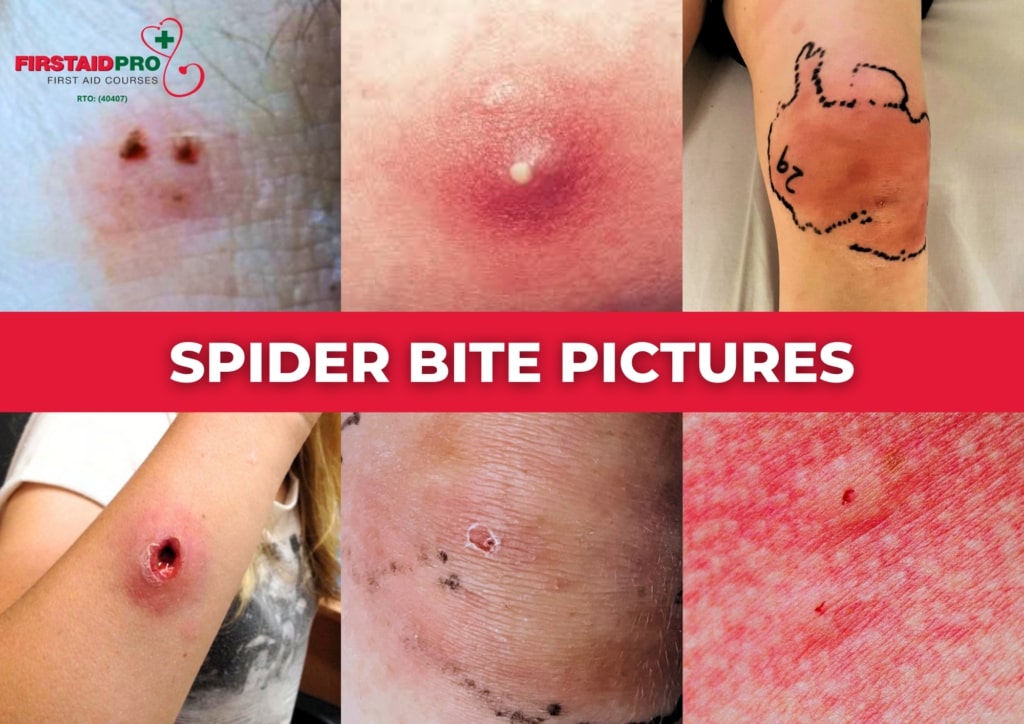
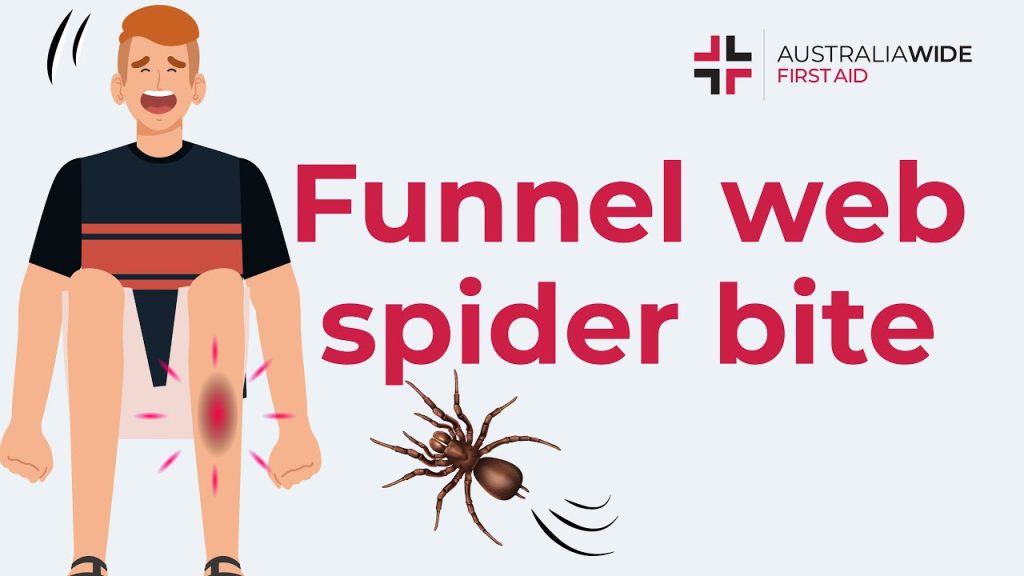
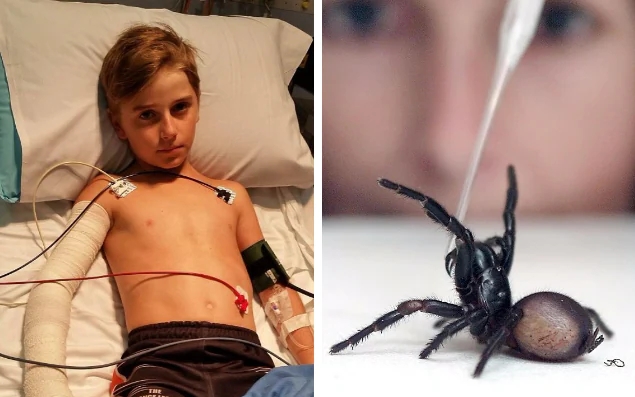
Funnel-web spider bites can be life threatening, especially in children. They must be treated quickly with antivenin by an experienced provider. Even with appropriate and quick treatment, symptoms may last for several days to weeks. The original bite may be small and may progress to a blood blister and look like a bull’s eye. (This is similar to the appearance of a brown recluse spider bite.)
The area affected by the bite may become deeper. Additional symptoms such as fever, chills, and other signs of additional organ system involvement may develop. Deep scarring may occur and surgery may be needed to improve appearance of the scar.
This article describes the effects of a bite from the funnel-web spider. Male funnel-web spider bites are more toxic than bites by females. The class of insects to which the funnel-web spider belongs, contains the largest number of venomous species known.
This article is for information only. DO NOT use it to treat or manage a bite from this type of spider. If you or someone you are with has an exposure, call the local emergency number (such as 911), or the local poison control center can be reached directly by calling the national toll-free Poison Help hotline (1-800-222-1222) from anywhere in the United States.
Poisonous Ingredient
The venom in the funnel-web spider contains the toxin called delta hetatoxin.
Where Found
Specific types of funnel-web spiders are found in southeast Australia, around Sydney. Others are found in Europe, New Zealand, and Chile. They are not native to the United States, although some people may keep them as exotic pets. The webs that are built by this group of spiders consist of funnel-shaped tubes that extend into a protected space such as a hole in a tree or a burrow in the ground.
3:What happens if you get bitten by a Sydney funnel-web spider?
Symptoms
Funnel-web spider bites are very painful and dangerous. They have been known to cause these symptoms in different parts of the body:
EYES, EARS, NOSE, AND THROAT
- Drooling
- Drooping eyelids
- Double vision
- Swallowing difficulty
- Tingling or numbness in the mouth or lips within 10 to 15 minutes
HEART AND BLOOD
- Collapse (shock)
- Rapid heart rate
LUNGS
- Difficulty breathing
MUSCLES AND JOINTS
- Joint pain
- Severe muscle spasms, usually in the legs and belly area
NERVOUS SYSTEM
- Agitation
- Confusion
- Coma (lack of responsiveness)
- Headache
- Numbness of mouth and lips
- Tremors (shaking)
- Shivering (chills)
SKIN
- Heavy sweating
- Redness around the site of the bite
STOMACH AND INTESTINES
- Diarrhea
- Nausea and vomiting
Home Care
Funnel-web spider bites are very toxic. Seek medical help right away. Call 911 or the Poison Control Center for guidance.
Immediate treatment of a bite consists of the following 4 steps, which are modeled after the Australian snake bite treatment.
- Clean the area with soap and water and wrap the length of the bitten extremity with an elastic bandage.
- Attach a splint to the bitten extremity to immobilize the area.
- Keep the victim from moving.
- Keep the bandage in place as the victim is transported to the nearest hospital or emergency treatment center.
Before Calling Emergency
Have this information ready:
- Person’s age, weight, and condition
- Time the bite occurred
- Area on the body where the bite occurred
- Type of spider, if possible
4:sydney funnel-web spider size
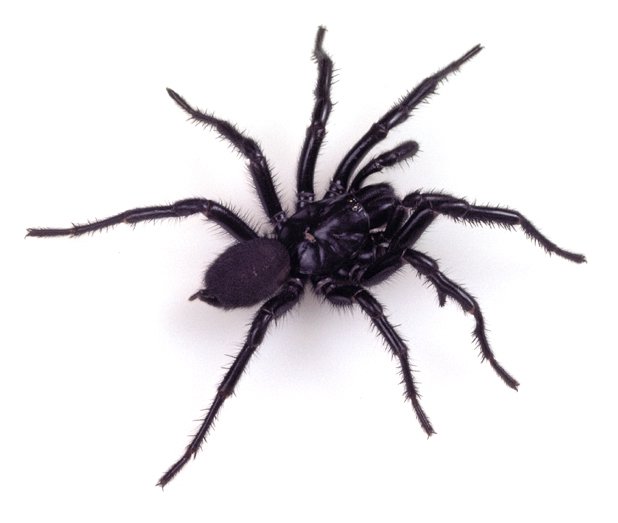
1 to 5 cm
The Sydney funnel-web is medium to large in size, with body length ranging from 1 to 5 cm (0.4 to 2 in). Both sexes are glossy and darkly coloured, ranging from blue-black, to black, to brown or dark-plum coloured.
5:sydney funnel-web spider habitat location
Where Australian funnel-web spiders live
Funnel-web spiders live in the moist forest regions of the east coast and highlands of Australia from Tasmania to north Queensland. They are also found in the drier open forests of the Western Slopes of the Great Dividing Range and South Australia’s Gulf region. Funnel-webs of the genus Atrax have a much smaller distribution than do the more diverse members of the genus Hadronyche. The Sydney Funnel-web Spider, Atrax robustus, is found from Newcastle to Nowra and west as far as Lithgow in New South Wales.
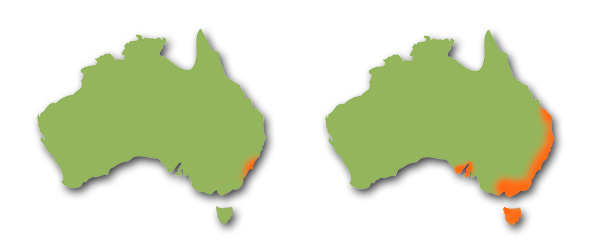
© Australian MuseumIn Sydney suburbia, funnel-web spiders mostly live in the moist upland forest areas of the Hornsby Plateau to the north and the Woronora Plateau to the south, where sheltered burrow habitats abound in both bushland and gardens. The dry, flatter areas of Western Sydney and the Cumberland Plain have fewer funnel-webs, their numbers picking up again in the foothills of the Blue Mountains. Two funnel-web species are common in the Sydney region – the Sydney Funnel-web Spider (Atrax robustus) and the Southern Tree-dwelling Funnel-web Spider (Hadronyche cerberea). The Blue Mountains Funnel-web Spider (Hadronyche versuta) also occurs here but is only common to the west and south of Greater Sydney.
While Sydney Funnel-webs were never restricted to the leafy north shore region as some would have it, Sydney real estate does give a rough guide to funnel-web density – the more expensive the area the greater the funnel-web population (the dry, sandy eastern suburbs excepted).
Within Hadronyche several groups of related species are currently recognised. These species groups are:
cerberea group, found entirely south of the Hunter River into Tasmania, except for a single species, the Northern Tree-dwelling Funnel-web Spider, Hadronyche formidabilis, the largest funnel-web spider (body length up to 5 cm)
infensa group, found north of the Hunter River region into south-east Queensland
adelaidensis group, isolated in the dry forests of the Gulf Region of South Australia; the only trap-door building funnel-web spiders
’lamington’ group, several species confined to discrete rainforest areas in New South Wales and Queensland
anzes group, a single, far northern outlier species in rainforests north of Cairns, north Queensland.
Illawarra wisharti is a single species in its own genus, isolated in the wet forests of the Illawarra region of New South Wales.
Sheltered retreats
Funnel-webs burrow in moist, cool, sheltered habitats – under rocks, in and under rotting logs, crevices, rot and borer holes in rough-barked trees. In gardens, they prefer rockeries and dense shrubberies, and are rarely found in more open situations like lawns.
Rain may flood burrows and the temporary retreats of male funnel-webs, causing an increase in their activity. Funnel-webs are very vulnerable to drying out, so high humidity is more favourable to activity outside the burrow than dry conditions. Most activity is nocturnal. Gardeners and people digging in soil may encounter funnel-webs in burrows at any time of the year.
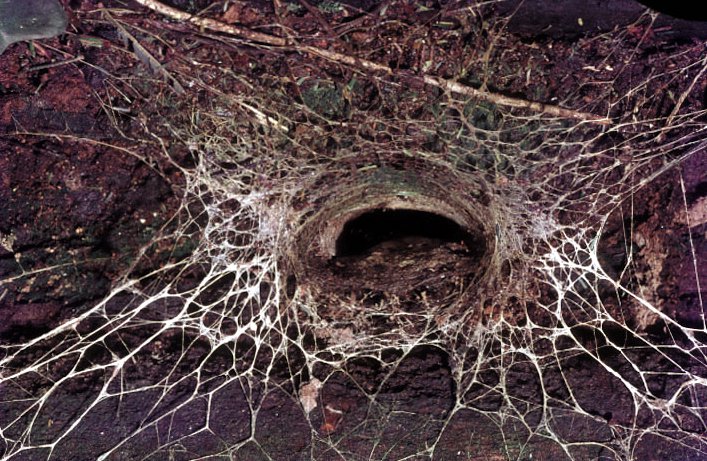
Toggle CaptionBlue Mountains Funnel-web Spider burrow entrance (Hadronyche versuta), clearly showing silk triplines radiating out from entrance.
Image: Ramon Mascord
Australian MuseumEarly warning system
The most characteristic sign of a funnel-web’s burrow is the irregular silk trip-lines that radiate out from the burrow entrance of most species. These trip-lines alert the spider to possible prey, mates or danger.
Indeed if a spider burrow has obvious silk trip-lines around its rim, you can be fairly certain that it belongs to a funnel-web spider.
The silk entrance to the burrow of a Sydney Funnel-web Spider has a more or less well-defined funnel-like silk entrance ‘vestibule’ within which is a collapsed, tunnel-like structure with one or two slit-like openings. The tunnel leads back into a short surface chamber from which the burrow descends. The burrow is often weakly silk-lined and rarely more than 30 cm deep. The spider (hunting mostly at night) sits just inside the entrance with its front legs on the trip-lines. When a beetle, cockroach, or small skink, typical items of funnel-web food, walks across the lines, the spider senses the vibrations and races out to grab its meal. The prey is quickly subdued by an injection of venom from the spider’s large fangs. Funnel-web spiders may also forage on the surface in the vicinity of the burrow.
Holes are normally found in moist, shaded areas like rockeries, dense shrubs, logs and leaf litter. A small, neat hole lined with a collar of silk which does not extend more than a centimetre from the rim could belong to a trapdoor spider (the common Brown Trapdoor Spider does not build a ‘door’ for its burrow). Other possible hole owners include mouse spiders, wolf spiders or insects (most commonly cicadas or ants).
Funnel-web spider FAQs
Can funnel-webs jump?
Despite some popular beliefs , funnel-webs can’ t jump. However they can move quickly, and they will rear up when feeling threatened and make sudden lunges when striking. Householders have been surprised by the agility of male funnel-webs, and their sometimes quick escapes from smooth-sided containers (e.g. when the tips of their long legs are able to reach the rim!)
Can funnel-webs swim?
Wandering funnel-webs spiders often fall into backyard swimming pools and they can stay alive for at least 30 hours underwater. They can’t swim but they can trap a small bubble of air in hairs around the abdomen, which aids both breathing and floating. As they gradually get waterlogged, their buoyancy decreases and they sink. Eventually they drown but this is a slow process. It should not be assumed that a non-moving spider at the bottom of a pool is dead as they often recover.
